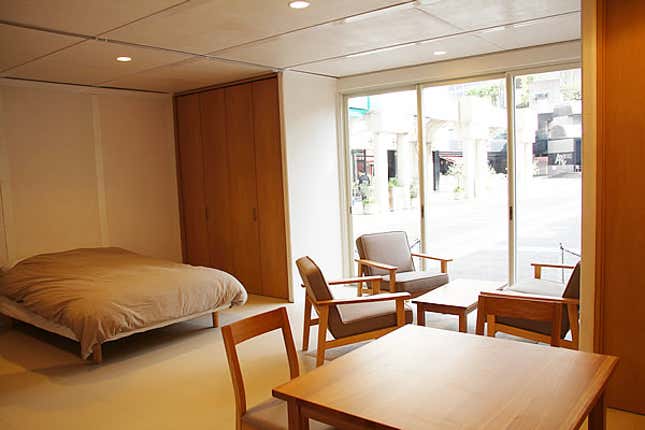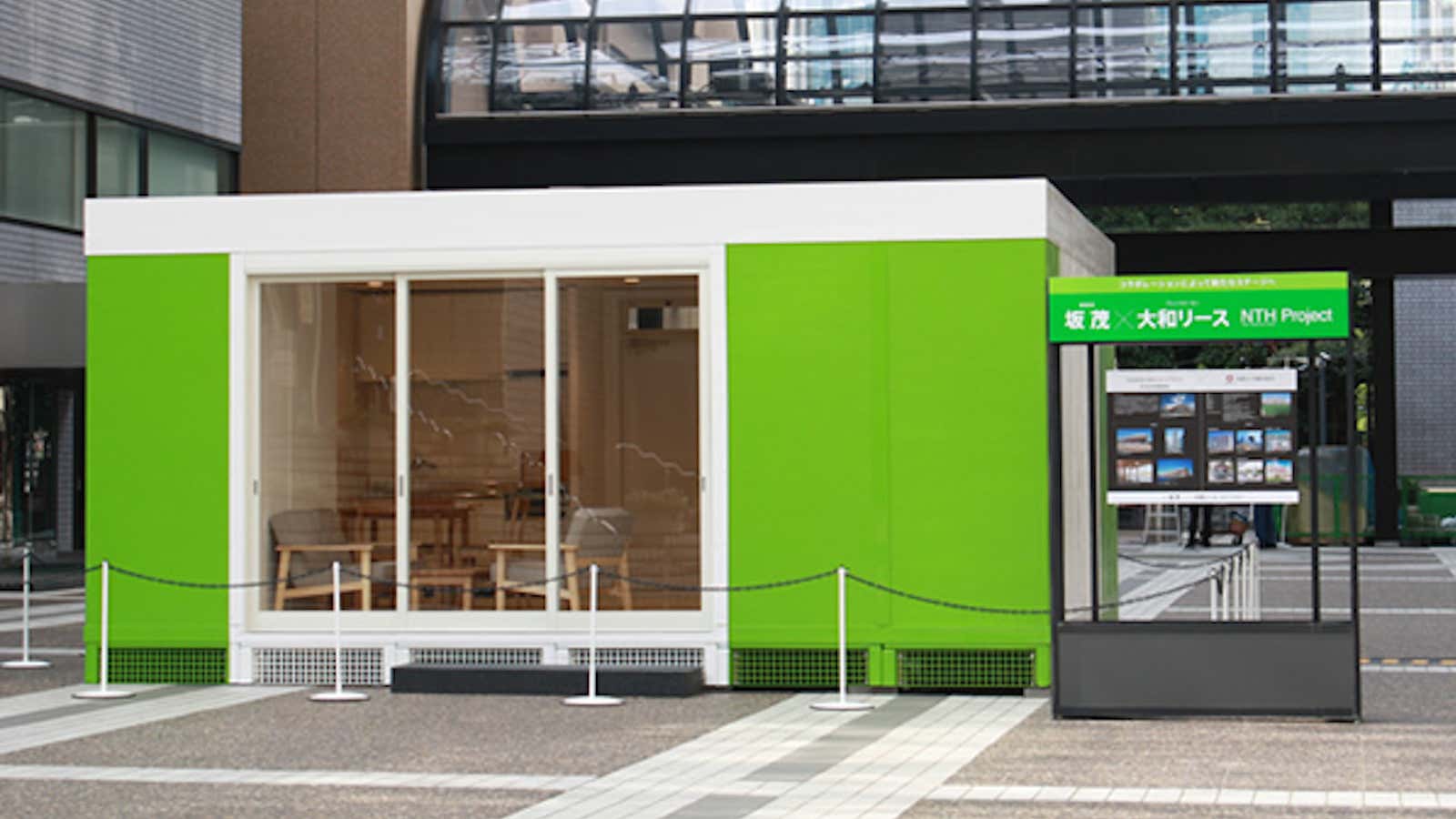Not knowing when a natural disaster might strike can make it difficult to create an efficient and fast way to produce large volumes of shelters at a moment’s notice. Japanese prefabricated building maker Daiwa Lease has solved this conundrum by setting up a production line in emerging Asian countries that can be efficiently diverted to make temporary housing units for Japan when a disaster strikes.
The “New Temporary House” (NTH) was designed by architect Shigeru Ban, who won the Pritzker prize for his innovative and low-cost shelters for disaster survivors, including recyclable paper tube houses used by refugees and evacuees from Rwanda to Turkey, to India, to Japan.
Survivors of natural or manmade disasters are often stuck for months in cramped and unsanitary mass shelters, where disease, and disillusionment spread quickly. After the massive tsunami that struck Japan’s northeast coast in March 2011 for example, many evacuees slept on cold gymnasium floors for months as the country’s prefab makers struggled to complete enough temporary housing units.
Daiwa’s new plan may be have been developed just in time. Scientists warn that a tremor of magnitude eight or above along the Nankai trough, a fault line that runs the length of Japan’s south coast, could leave hundreds of thousands dead and even more homeless. Daiwa Lease, which supplied a tenth of the 53,000 temporary housing units after the 2011 tsunami, was worried that simply scrambling to find spare temporary units and factory capacity after a disaster has already happened would not be sufficient in the event of such a quake.
Meanwhile, demand for weather-resilient and sanitary low-cost housing in emerging Asian nations is rising, but local homebuilders continue to focus on the expanding middle class rather than those at the bottom of the ladder. Realizing disaster housing and low-cost housing shared many requirements—inexpensive, quick and easy to construct, suitable for families—Daiwa Lease realized the potential in making a single unit that could serve both needs.
“We are matching the two markets together. There’s huge demand for low-cost housing in emerging nations, but the governments aren’t doing anything and private companies there are only focused on high-end housing, where there’s bigger profits,” Hideto Kobayashi, general manager of Daiwa Lease’s overseas development planning division, told Quartz.
Daiwa Lease is hoping to bring its housing units to markets across Asia including the Philippines, where the population is rapidly growing and there is a shortage of almost four million low-cost homes. The Filipino NTH unit is estimated to cost around 300,000 pesos, the upper limit for accommodation classified as “low-cost” housing in the region. The company is also conducting a feasibility study in Indonesia and would like to expand across other emerging Asian nations with a deficit of inexpensive housing. In each, it will use local construction firms and local laborers to manufacture and construct the houses.
One of Daiwa Lease’s big selling points is the durability of their products, which are meant to be used long-term and are therefore of higher quality than existing disaster housing. The units supplied to evacuees of Japan’s 2011 tsunami for example were only designed to last two years and are now molding and falling apart as the search continues for land on which to build more permanent housing.
“The living conditions in the current emergency housing are not good, it has to be said. However, they were built with the aim of supplying shelter as quickly as possible, not providing the best living environment possible. The most important thing was speed,” notes Kobayashi.
The NTH units, in contrast, should last for at least 20 years and include features like wall panels are built with Fiber Reinforced Plastic (FRP), that Ban says is a light but sturdy material that is also a good insulator, meaning that houses will be less likely to develop mold.

Although the NTH has a floor space of just 30 square meters, just over the legal minimum for temporary housing in Japan, its spacious feel demonstrates its architect’s expertise in providing comfort within strict constraints. The residents who lived in temporary housing units fashioned out of stacked shipping containers designed by Ban for the tsunami-damaged town of Onagawa, are reportedly healthier and happier than evacuees in standard-issue units elsewhere.
Japan’s prefab industry is one of the most efficient and sophisticated in the world, and high seismic standards ensure many of its houses are disaster-proof. Daiwa Lease’s next goal is to create a network of suppliers that could quickly respond to disasters when they happen, wherever they are in the world.
“We’re aiming at an international network of disaster housing. After typhoon Haiyan in the Philippines last year, we didn’t have enough equipment or funds to respond,” Kobayashi says. “If another country made a request, we would of course respond. But if we had some kind of prior agreement we could get moving immediately after a disaster.”
